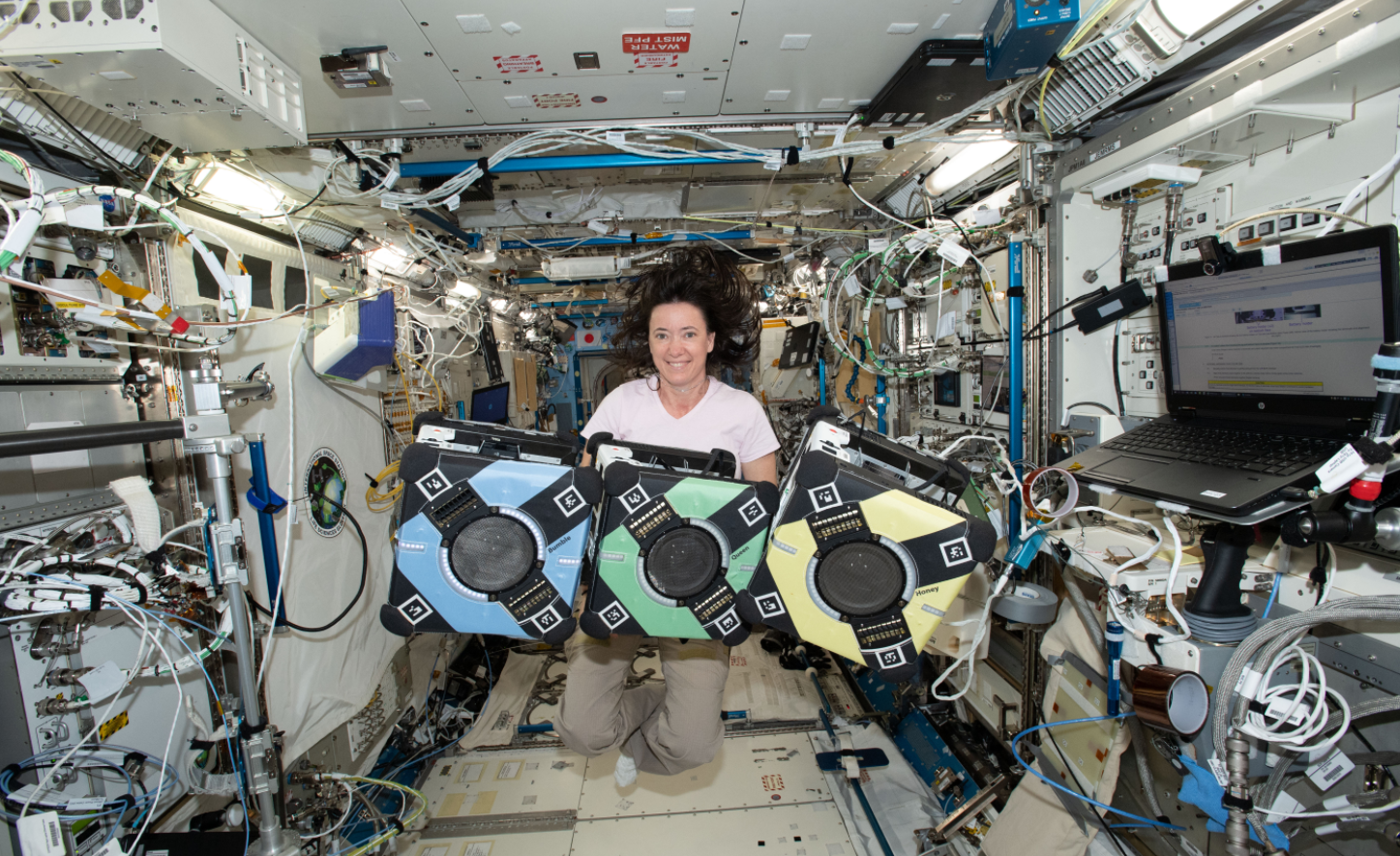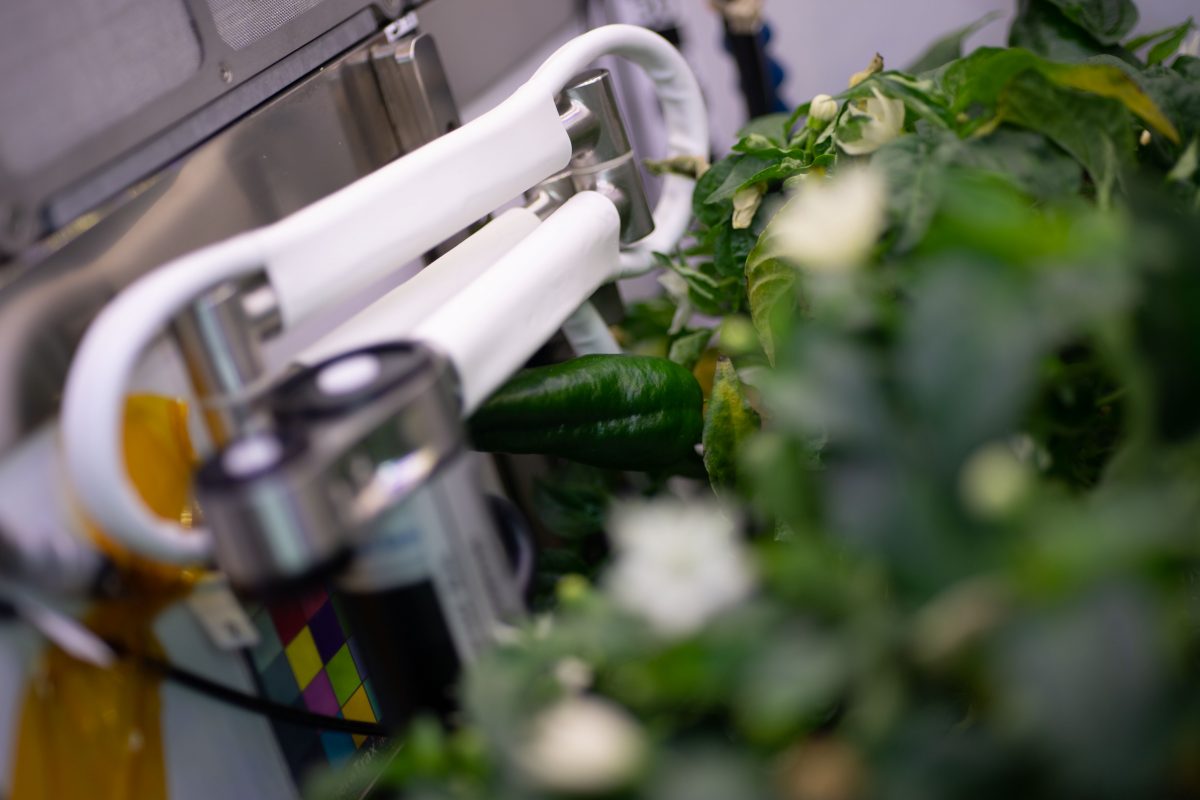Station Science Top News: Oct. 6, 2021
The trio of free-flying cube-shaped Astrobee robots are now all activated aboard the International Space Station, enabling researchers from around the world to conduct zero-gravity robotics research in microgravity.
On Sept. 20, NASA astronaut Shane Kimbrough unpacked, conducted health checks, and got the Astrobee robot “Queen” up and floating aboard the space station. This was the first time Queen "woke up" in orbit after journeying to the microgravity lab in 2019. Now that Queen is reunited with fellow free-flying robots Honey and Bumble, the trio can work alone, or together, to carry out investigations and experiments that help develop hardware and software for future missions. Next up, the ground-based team will begin planning activities for Queen, including testing its ability to tell where it is within station and ensuring it is in full working order.
 NASA astronaut Megan McArthur poses with the Astrobee robotic free-flyers in support of the Kibo Robot Programming Challenge, or Robo-Pro Challenge. Credits: NASA
NASA astronaut Megan McArthur poses with the Astrobee robotic free-flyers in support of the Kibo Robot Programming Challenge, or Robo-Pro Challenge. Credits: NASA
Results from an ESA (European Space Agency) physics study aboard station uncovered information about the crystallization of Vit106, a mix of metallic liquid. A better understanding of these properties could help scientists develop lighter, higher-performing alloys for use both on Earth and in space travel.
The ESA EML Batch 2 - MULTIPHAS study examined the effect of stirring on the rate of nucleation (the initial stage of crystallization) in electromagnetically levitated metallic liquid drops aboard station. Three different types of metal mixes were investigated. Results published in npj Microgravity showed that increased stirring of one of the metal mixes (Vit106) increases the nucleation rate. This new observation contributes to the fundamental understanding of nucleation mechanisms, the processing of materials in space, and microgravity manufacturing conditions.
Houston, we have a pepper! The four chile pepper plants growing aboard the space station in the Advanced Plant Habitat (APH) have borne fruit. This experiment could help overcome the challenges of growing fruit on long-duration space missions.
To pollinate the chile flowers in orbit, the team at NASA’s Kennedy Space Center instructed APH to run its fans to create a gentle breeze in microgravity to agitate the flowers and encourage the transfer of pollen. The crew also provided assistance by hand pollinating some of the flowers. Studies of fruit development in microgravity are limited, and NASA researchers have noted lower fruit development versus ground observations in this experiment for reasons that are not yet fully understood. Overcoming the challenges of growing fruit in microgravity is important for long-duration missions during which crew members will need good sources of Vitamin C — such as peppers — to supplement their diets.
Learn more in this recent Kennedy blog post.

Results from a space station study of heart function found that astronauts sleep less but have a higher quality of sleep in microgravity. Scientists believe this could lead to improvements in astronaut well-being and have anti-aging impacts.
As a part of a Japan Aerospace Exploration Agency space station experiment, researchers studied the changes in heart functions during long-duration microgravity exposure, how those changes affected sleep quality, and how magnetic fluctuations in space affected circadian rhythms. As was recently published in Scientific Reports, researchers found that although the time astronauts slept decreased during flight, sleep quality improved. The scientists concluded that these data, combined with a correlation between peaks in geomagnetic disturbances and heart rate, suggest long-duration space travel can cause improvements in astronaut well-being and potentially some anti-aging effects.







